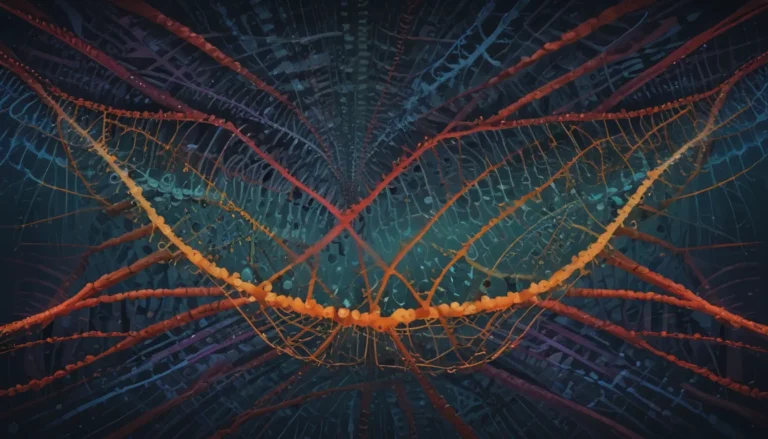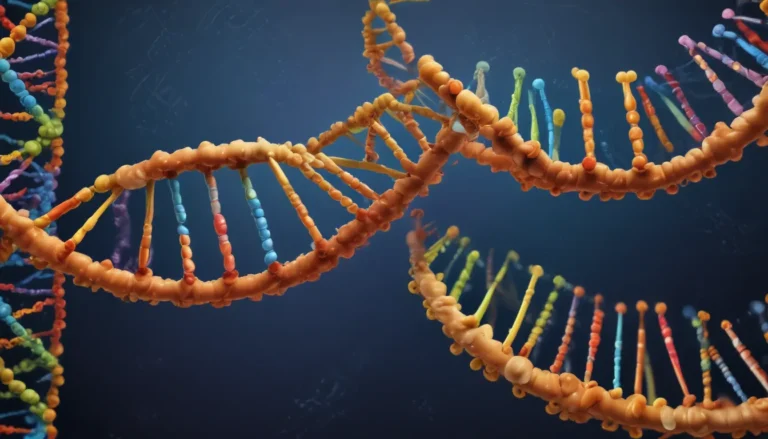A Note About Images: The images used in our articles are for illustration purposes only and may not exactly match the content. They are meant to engage readers, but the text should be relied upon for accurate information.
Are you ready to embark on a thrilling journey into the enchanting realm of molecular biology? Join us as we unravel the mysteries of polyadenylation, a vital process that plays a pivotal role in gene expression and cellular function. From its discovery to its diverse functions, polyadenylation holds a wealth of captivating information waiting to be uncovered. Buckle up and get ready to explore 17 unbelievable facts about this essential biological process!
The Marvel of Polyadenylation
Polyadenylation serves as the final touch in the intricate process of gene expression. By adding a poly(A) tail to messenger RNA (mRNA) molecules, this process regulates RNA stability, translation efficiency, and nuclear export, ensuring proper cellular function.
Understanding the Complexity
Polyadenylation is a multi-step process that begins with the recognition of specific sequences, called polyadenylation signals, in the pre-mRNA molecule. This triggers the assembly of the polyadenylation complex, which includes proteins responsible for cleaving the RNA and adding the poly(A) tail.
Beyond mRNA Stability
While polyadenylation is best known for its role in mRNA stabilization, recent research has unveiled its involvement in other essential cellular processes. From alternative splicing regulation to nuclear mRNA export and microRNA biogenesis, polyadenylation’s functions are diverse and far-reaching.
Ensuring RNA Stability
The addition of a poly(A) tail shields the mRNA from degradation by exonucleases, extending the lifespan of the molecule. The length of the poly(A) tail directly impacts mRNA stability, with longer tails associated with increased stability.
Did you know? Poly(A) tail length is dynamic and varies in response to cellular conditions, such as stress or developmental cues, playing a crucial role in gene expression control.
Enhancing Translation Efficiency
Polyadenylation plays a critical role in enhancing the efficiency of mRNA translation into proteins. The poly(A) tail interacts with translation factors, facilitating the initiation and ribosome binding to the mRNA molecule, ensuring proteins are synthesized effectively.
Unveiling Alternative Polyadenylation
In addition to the conventional cleavage and polyadenylation site, alternative polyadenylation gives rise to multiple mRNA isoforms from a single gene. This process generates distinct protein variants, expanding the functional diversity of the proteome.
Bringing Regulation to Light
Polyadenylation regulation is mediated by cis-acting elements within the pre-mRNA sequence. These elements interact with polyadenylation factors to determine the cleavage site and the length of the poly(A) tail, adding layers of complexity to gene expression control.
Fun Fact: The polyadenylation signal sequence, known as the AAUAAA motif, is the most common recognition element for this process, highlighting its importance in mRNA maturation.
Unraveling the Disease Connections
Aberrant polyadenylation has been associated with various diseases, including cancer, neurodegenerative disorders, and genetic syndromes. Dysregulation of polyadenylation can disrupt normal gene expression patterns, contributing to disease progression.
Delving into the Machinery
The polyadenylation process involves a complex machinery of factors, RNA-binding proteins, and enzymes responsible for RNA cleavage and poly(A) tail addition. Alterations in these components can impact polyadenylation efficiency, affecting gene expression regulation.
Intertwining with mRNA Localization
Polyadenylation plays a pivotal role in determining the subcellular localization of mRNA molecules. The poly(A) tail interacts with proteins involved in mRNA localization, guiding transcripts to specific cellular compartments, such as dendrites in neurons.
Nurturing Development
In embryonic development and tissue-specific gene expression, polyadenylation plays a critical role. Proper regulation of polyadenylation is essential for generating the necessary mRNA isoforms required for distinct cellular functions.
Dance of Transcription Connection
The polyadenylation process is intricately linked with transcriptional regulation. Factors involved in transcription elongation and termination can influence polyadenylation efficiency, adding another layer of complexity to the control of gene expression.
Battling Viral Intruders
Viral infections manipulate the host polyadenylation machinery to favor viral gene expression. Viruses encode proteins that interact with polyadenylation factors, altering mRNA processing and facilitating viral replication.
Embracing RNA Decay
Polyadenylation also participates in mRNA decay pathways. Shortening of the poly(A) tail can trigger mRNA degradation, enabling the removal of unwanted or damaged transcripts from the cellular pool.
Evolutionary Resilience
Polyadenylation is a highly conserved process found in all known eukaryotic organisms, emphasizing its fundamental importance in gene expression. Its evolutionary conservation hints at its crucial role throughout the evolutionary journey of life.
Concluding Thoughts on Polyadenylation
Polyadenylation unveils a fascinating world of complexity and significance in the realm of molecular biology. From mRNA stability control to translation efficiency and disease associations, this essential process shapes gene expression regulation in profound ways.
Understanding polyadenylation not only enriches our knowledge of gene expression but also holds significant implications for fields like medicine and biotechnology. Exploring this process opens doors to innovative research and potential therapeutic interventions for diseases like cancer.
FAQs Answered
1️⃣ What is polyadenylation?
Polyadenylation is a process where a poly(A) tail is added to the 3′ end of an mRNA molecule in molecular biology.
2️⃣ What is the function of polyadenylation?
Polyadenylation plays a crucial role in mRNA stability, translation efficiency, and gene expression regulation.
3️⃣ How does polyadenylation affect gene expression?
Polyadenylation influences mRNA stability, localization, translatability, and alternative splicing, impacting protein isoform production.
4️⃣ Are all mRNA molecules polyadenylated?
While most mRNA molecules undergo polyadenylation, exceptions exist, such as certain viral RNAs and non-coding RNAs.
5️⃣ Can polyadenylation be regulated?
Yes, polyadenylation is regulated by sequence elements in mRNA and RNA-binding proteins, allowing precise control of gene expression.
6️⃣ What are the implications of studying polyadenylation?
Studying polyadenylation aids in understanding gene expression mechanisms and developing therapies for diseases, contributing to evolutionary knowledge and gene expression diversity.
7️⃣ Are there diseases associated with polyadenylation abnormalities?
Yes, abnormalities in polyadenylation are linked to diseases like cancer, neurological disorders, and genetic syndromes, offering insights for diagnostic tools and potential treatments.
8️⃣ How is polyadenylation studied in the laboratory?
Scientists use techniques like RNA sequencing, RT-PCR, and biochemical assays to study polyadenylation, examining patterns and regulatory factors.
The captivating facts about polyadenylation offer a glimpse into the intricate world of gene expression and molecular biology. Explore the wonders of life’s genetic code, unveiling the secrets that shape our existence and unlock new possibilities for scientific discovery!
Our commitment to providing accurate and engaging content drives us to present credible information contributed by users like you. Each fact undergoes thorough review by our dedicated editors to ensure authenticity and quality. Embark on a journey of learning and exploration with us, trusting in our dedication to delivering trustworthy insights and knowledge.




